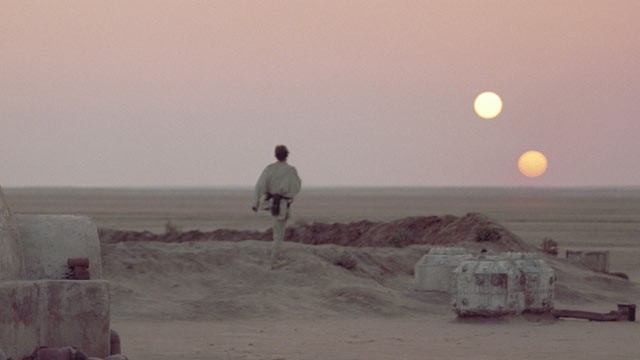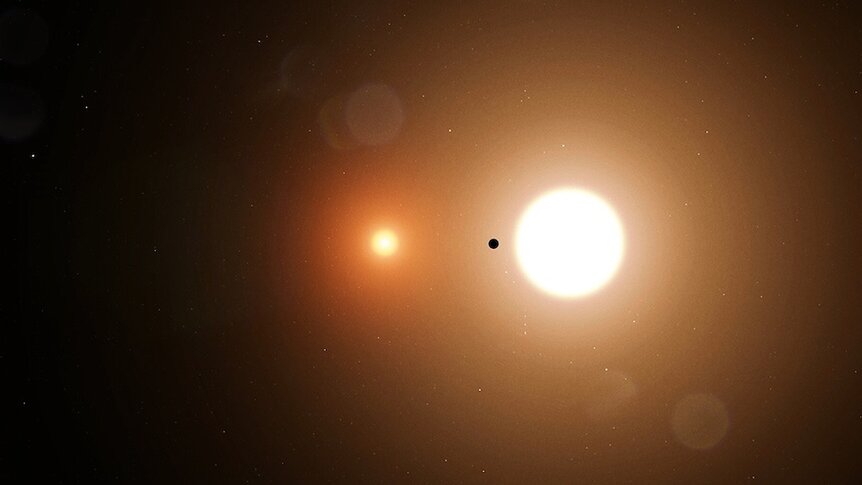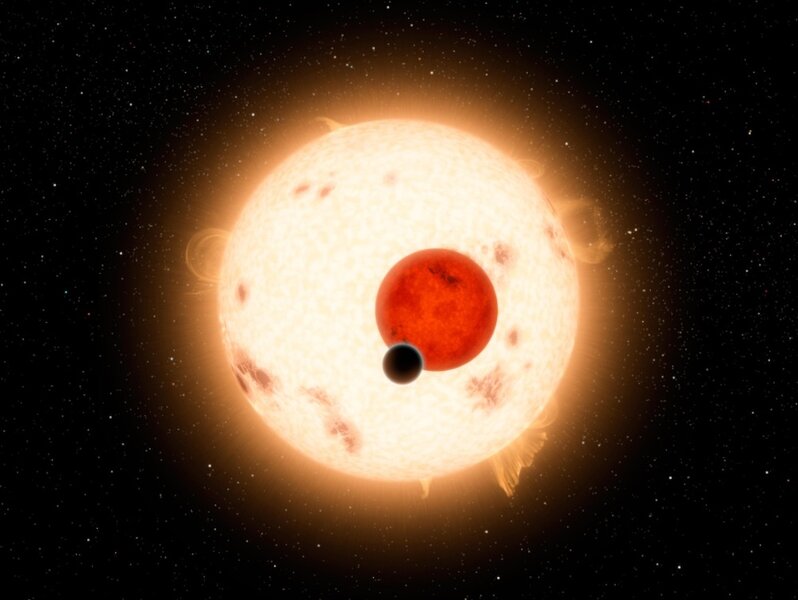Create a free profile to get unlimited access to exclusive videos, sweepstakes, and more!
Orbiting two suns: The science behind Tatooine and 'Obi-Wan Kenobi'
It would be pretty, but would it be habitable?

Obi-Wan Kenobi, the latest addition to the Star Wars franchise, took viewers back to that infamous desert planet Tatooine — the place where the Skywalker Saga both began and ended. It was the backdrop for Luke's inciting incident where, beneath the planet's twin suns, he found a call to adventure which would forever change the trajectory of a galaxy far, far away.
It's been said that if there is a bright center of the universe, Tatooine is the planet it's farthest from. Of course, we know there is no center of the universe. Or, at least, every planet is the center of the universe, from a certain point of view. Moreover, while Luke thinks of Tatooine as being an especially terrible place, planets like it might be more common than we think. Whether or not they'd be good at supporting life is another question entirely.
PLANETS AROUND BINARY STAR SYSTEMS
Humans are arrogant. It's not necessarily our fault, we can only see the universe through our own eyes, so we tend to assume that the way we do things is the best or only way to do them. Our star system has a single star and, for a while, we assumed that was the way star systems worked, at least most of the time. Turns out, that couldn't' be further from the truth.
A survey of the night sky will show you that about two thirds of the stars within 81 lightyears of here — that's 25 parsecs if you're flying the Millennium Falcon — are binary or multiple-star systems. In fact, research suggests that most stars begin their lives as parts of star systems and are sometimes ejected in order to become single stars.
Believe it or not, our own Sun likely started its life this way, having been forged in a stellar nursery along with sister stars from which we've been estranged. Statistically speaking, we should have had at least one other star to hang out with. The fact that we don't makes systems like ours weirder than the one in which Tatooine orbits.
(By the way, the hunt for our stellar siblings continues and we've found some pretty good candidates.)
Knowing that most stars out there are hanging out with friends is all well and good, but you might be asking yourself if binary or multiple-star systems are good for having planets. It's a worthwhile question and something astronomers have been curious about as well. As it happens, binary star systems are plenty good at holding onto planets. About half of all exoplanets discovered are orbiting more than one star. That means that, all things being equal, we were basically a coin toss away from having double sunsets.
LIVING IN A BINARY SYSTEM
So, you're living on a planet orbiting two stars. Is life twice as romantic or twice as deadly? Well, it sort of depends on the gravitational relationships at play. It's worth mentioning that, so far at least, we only know of one place in the universe where life exists and you're standing on it. For the purposes of this discussion, though, we'll make an assumption that life emerges elsewhere in order to ask what it might be like to try and maintain an existence on a world like Tatooine.
There are a number of different types of binary star systems, some of which might be better for sustaining life than others. If the stars are far enough apart, a planet might orbit only one of them. That would mean that sometimes you'd have one sun in the sky and sometimes you'll have two. Sometimes you'll have both sides of the planet illuminated by different stars. The day-night cycle, and the amount of light reaching the planet's surface, could get weird. In other instances, a planet might end up with a highly elliptical orbit, meaning it could be in the system's habitable zone some of the time, but not all of the time. Things can get even weirder. The binary star SVS 13 appears to be forming planets around each of the two stars, and additional planets farther out which orbit both stars.
When it comes to Tatooine, we do know a little bit about the star system. We know that the planet is circumbinary, meaning it orbits both stars at the same time. If the stars are close enough together, a planet can orbit their center of mass more or less as if they were one star and would still get a relatively normal day-night cycle. Contrary to our assumptions, these sorts of systems might actually be the best place for life to set up shop.
Simulations of binary star systems which are close together and within which both stars are about 80 percent the mass of the Sun have shown a couple of advantages. First, they extend the habitable range farther away from the stars and make it larger. That means there are more opportunities for orbits which sit within the goldilocks zone. Pushing the orbits farther away also reduces the likelihood of a planet being tidally locked and the radiation from the stars is likely to be consistent. In a study, scientists from New Mexico State University hypothesized that there could be more life around these sorts of systems than around single stars, based on their simulations.
It's almost enough to make you feel a little disappointed in our unusually mundane star system with its one lonely star. Then again, in a universe seemingly so devoid of life, we should probably happy we're here at all and not at the mercy of a moon-sized, planet-destroying battle station. Things could be worse.




























